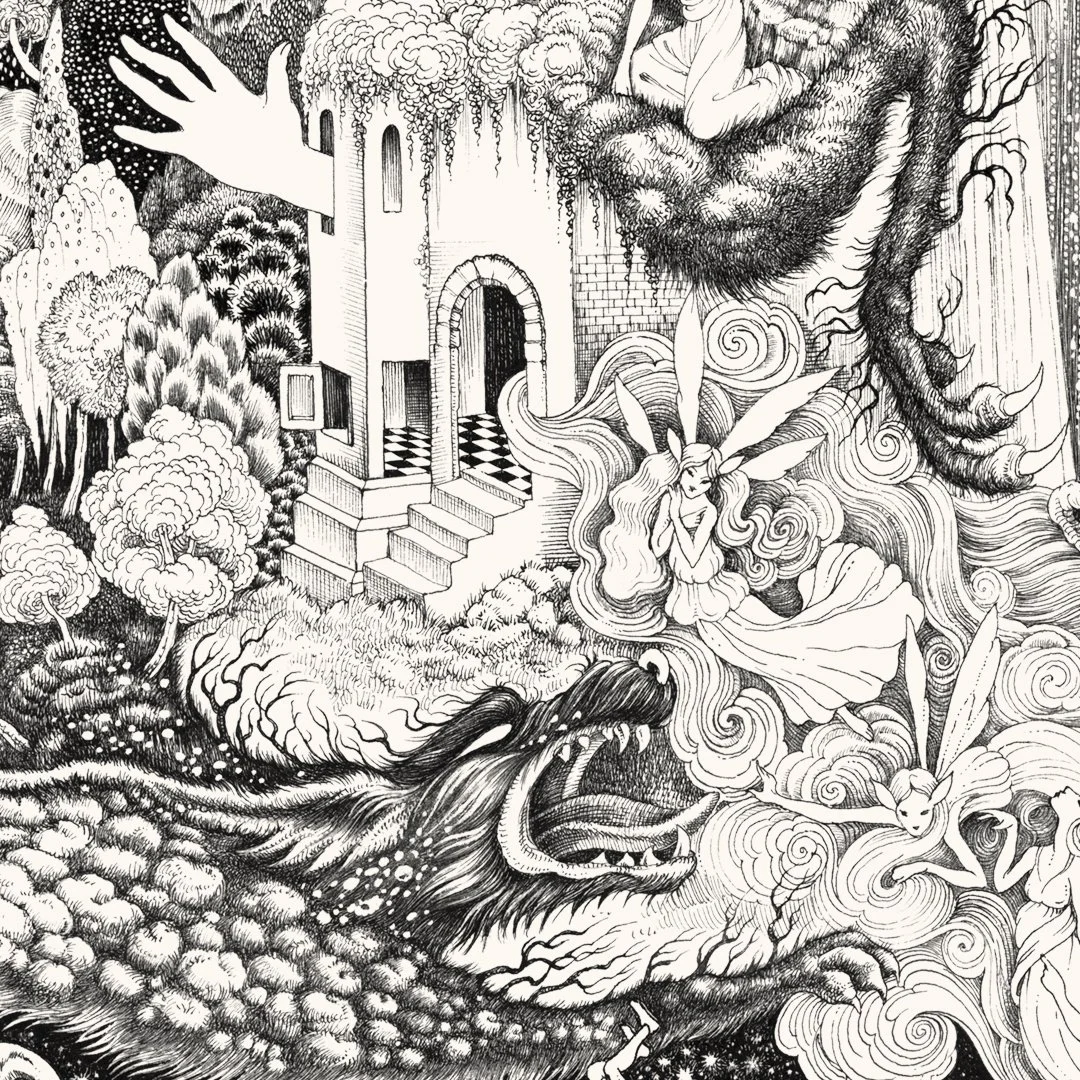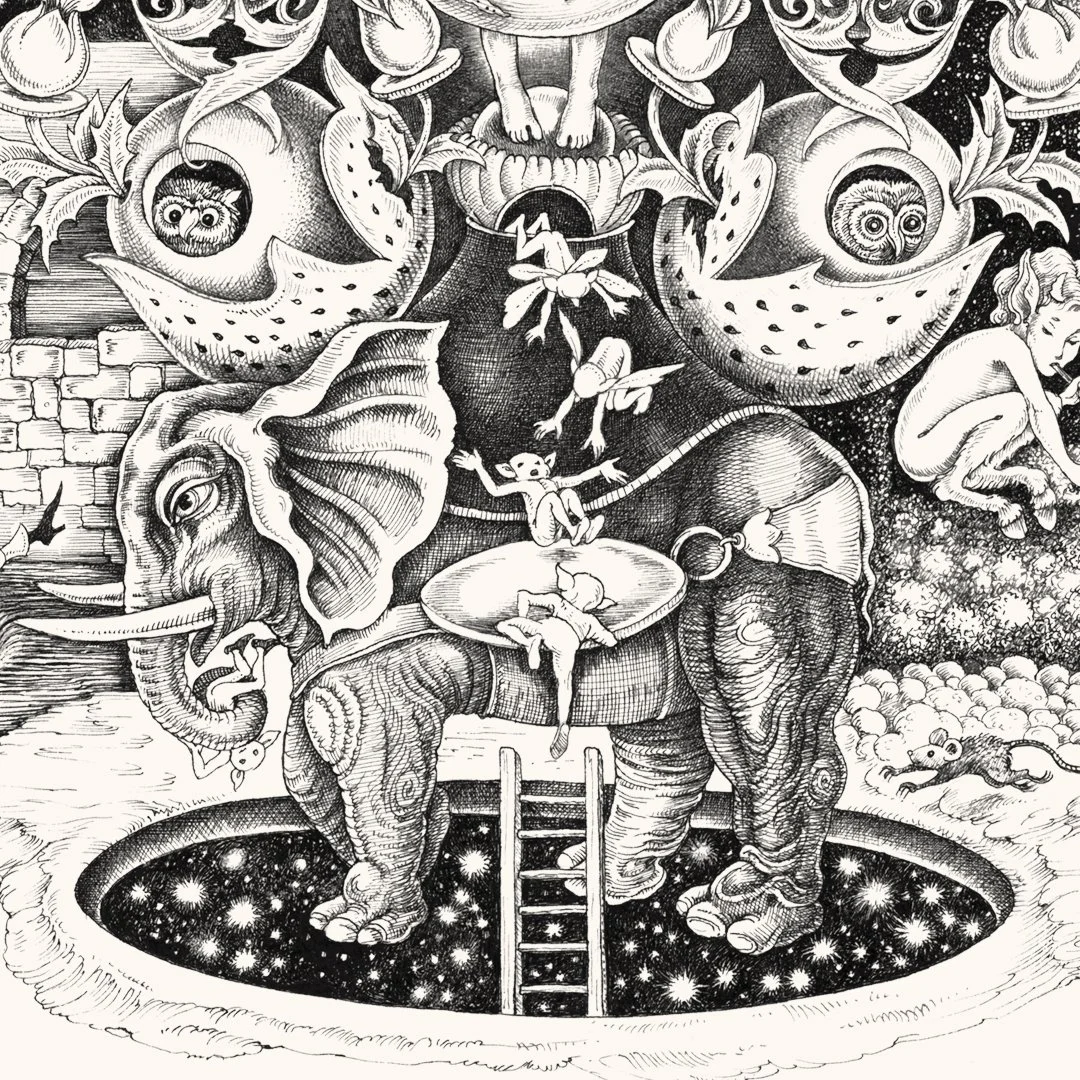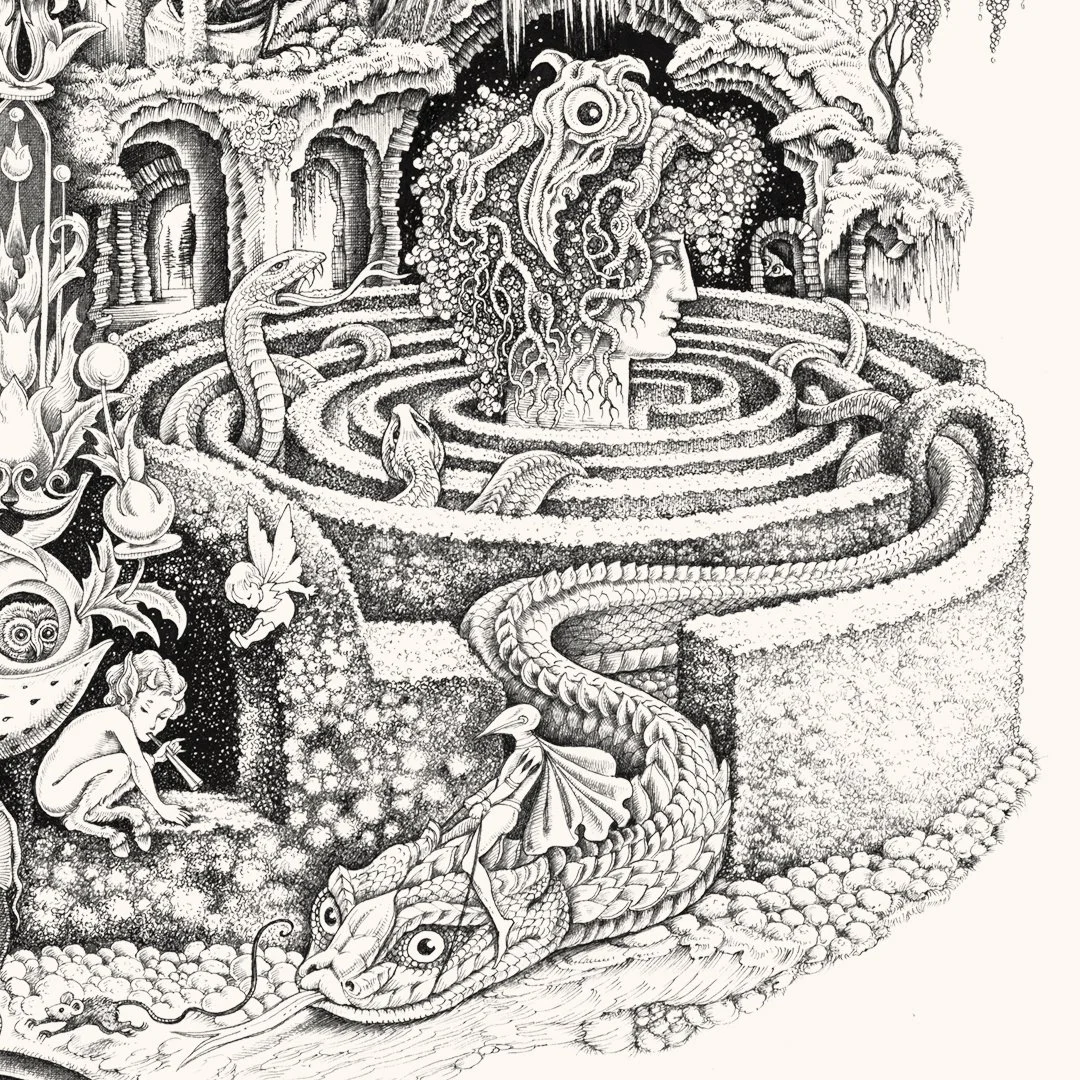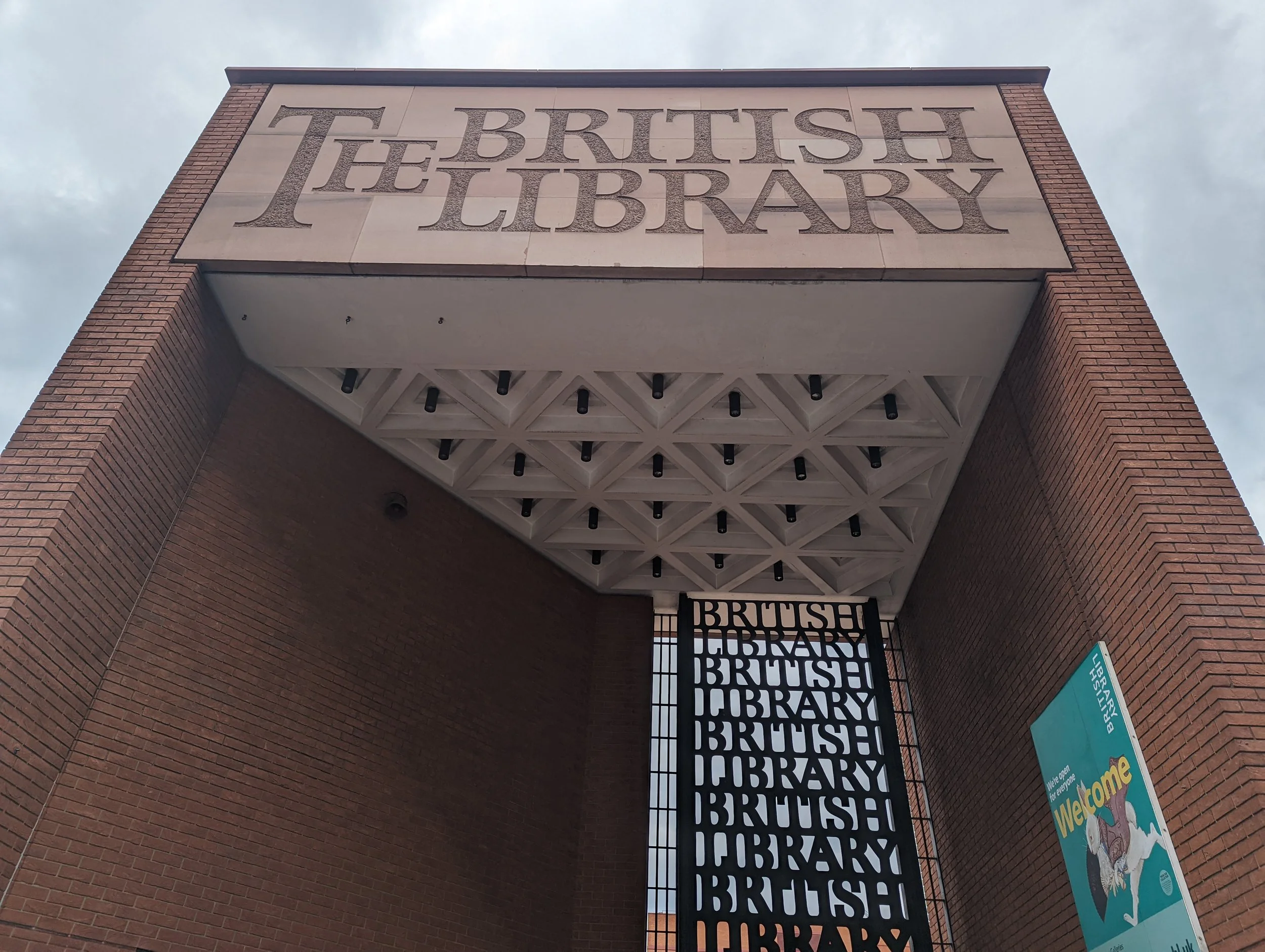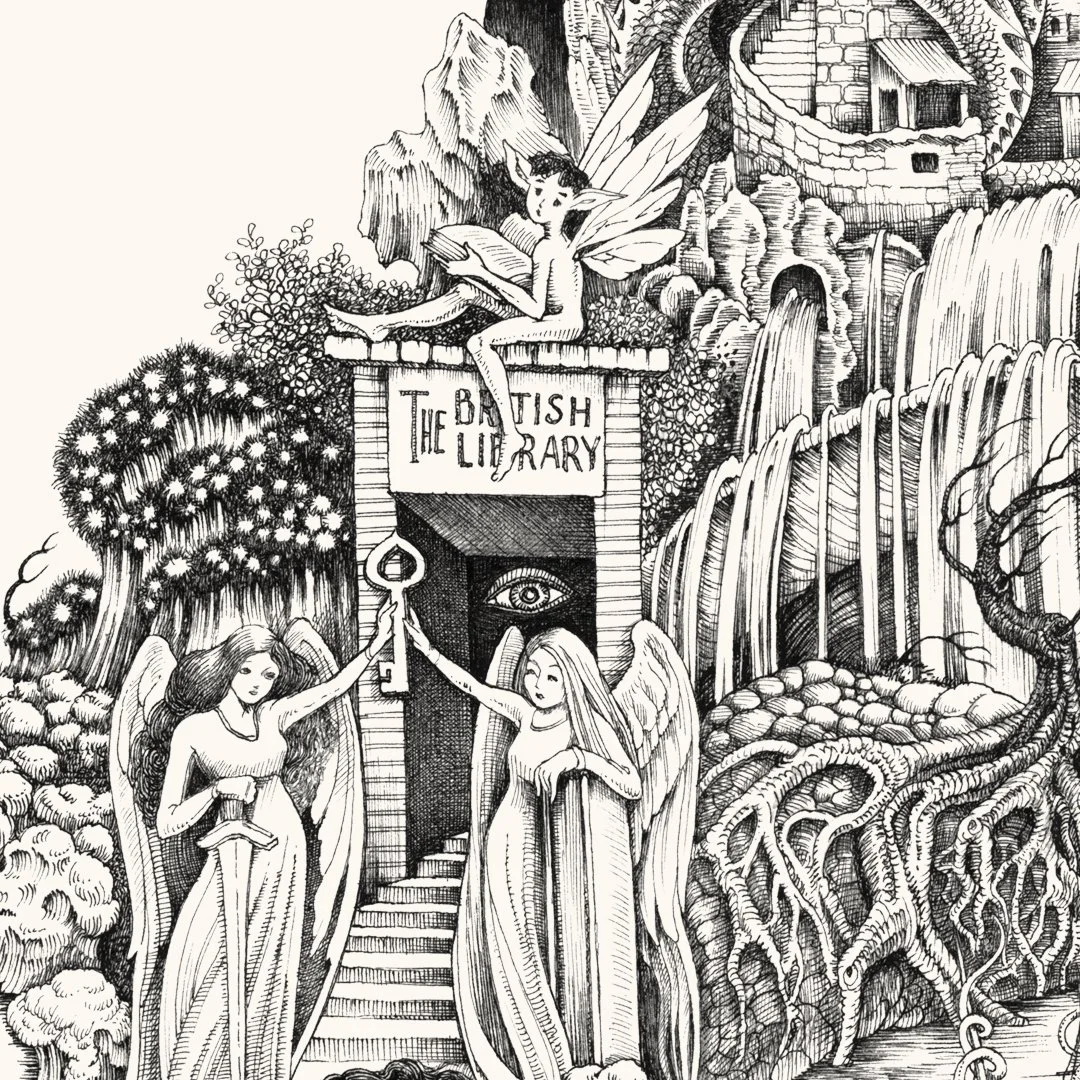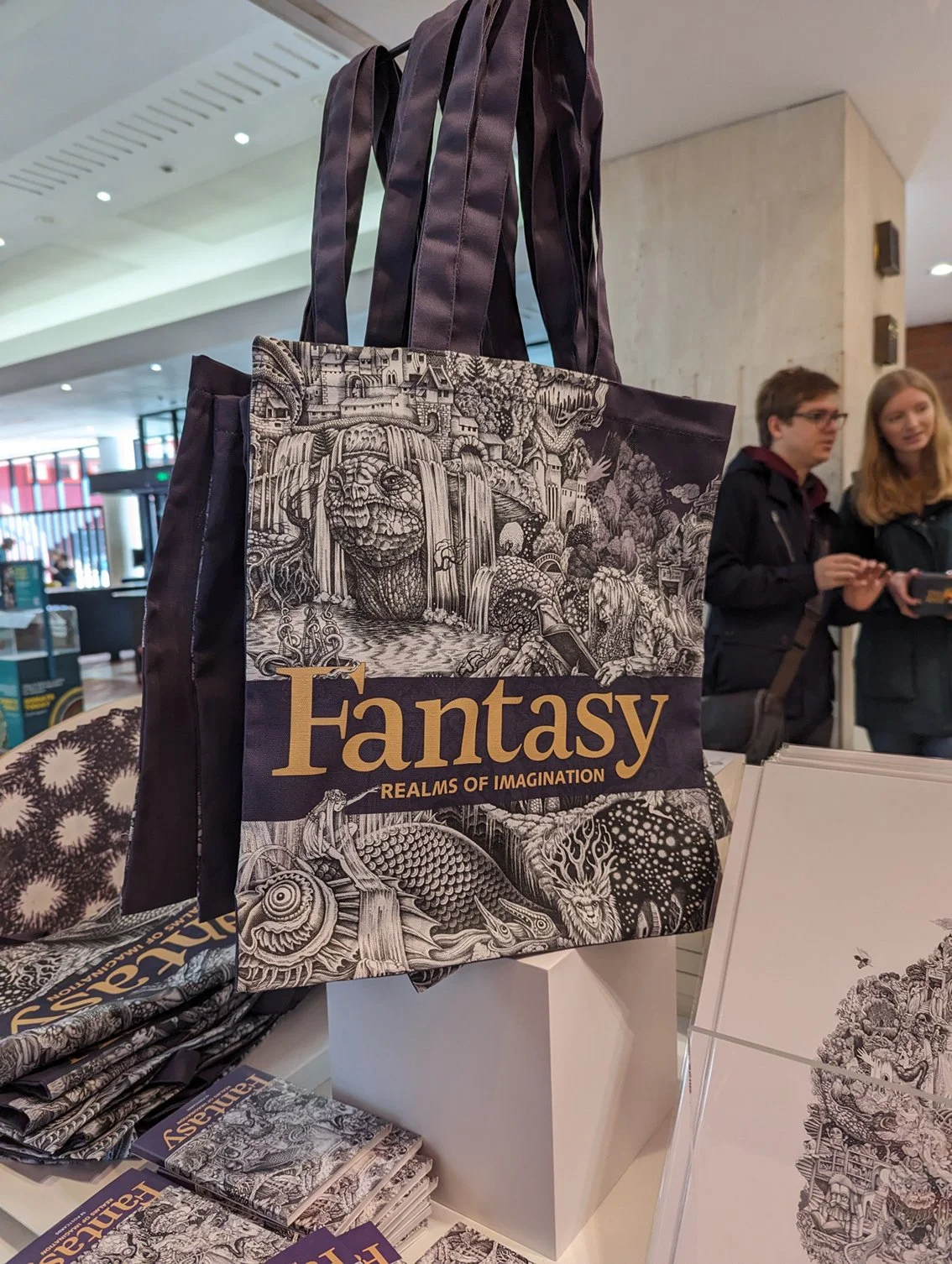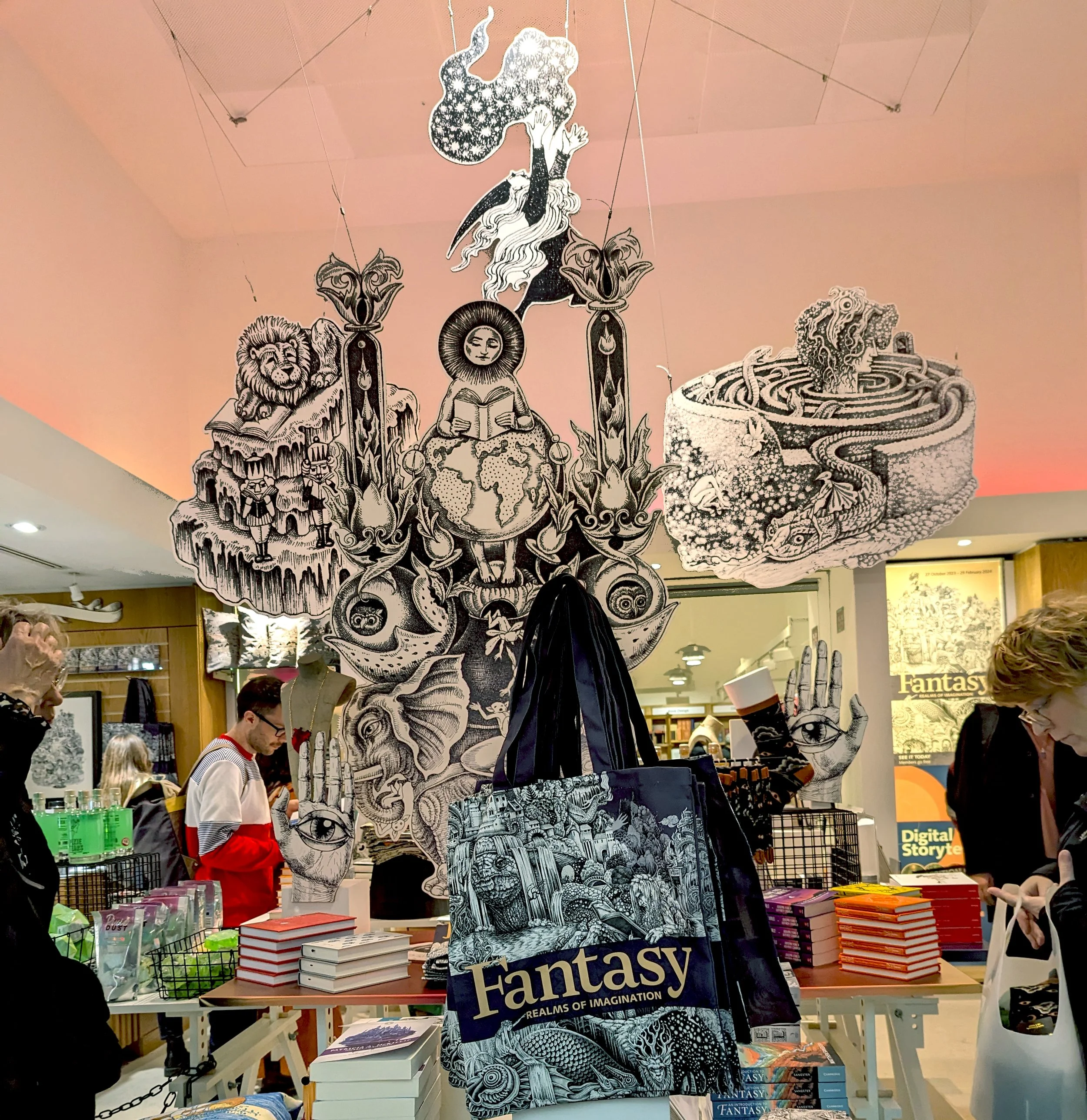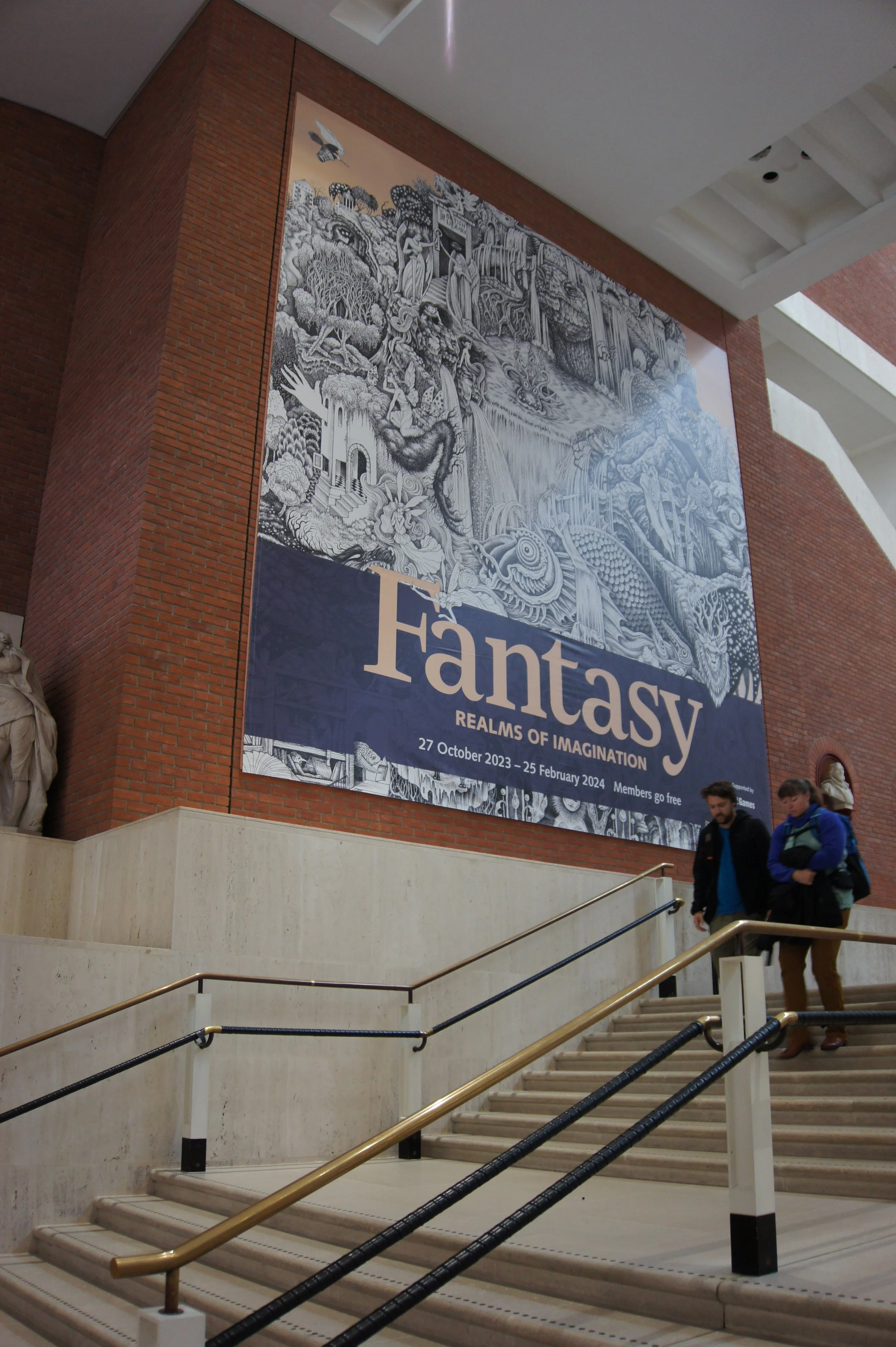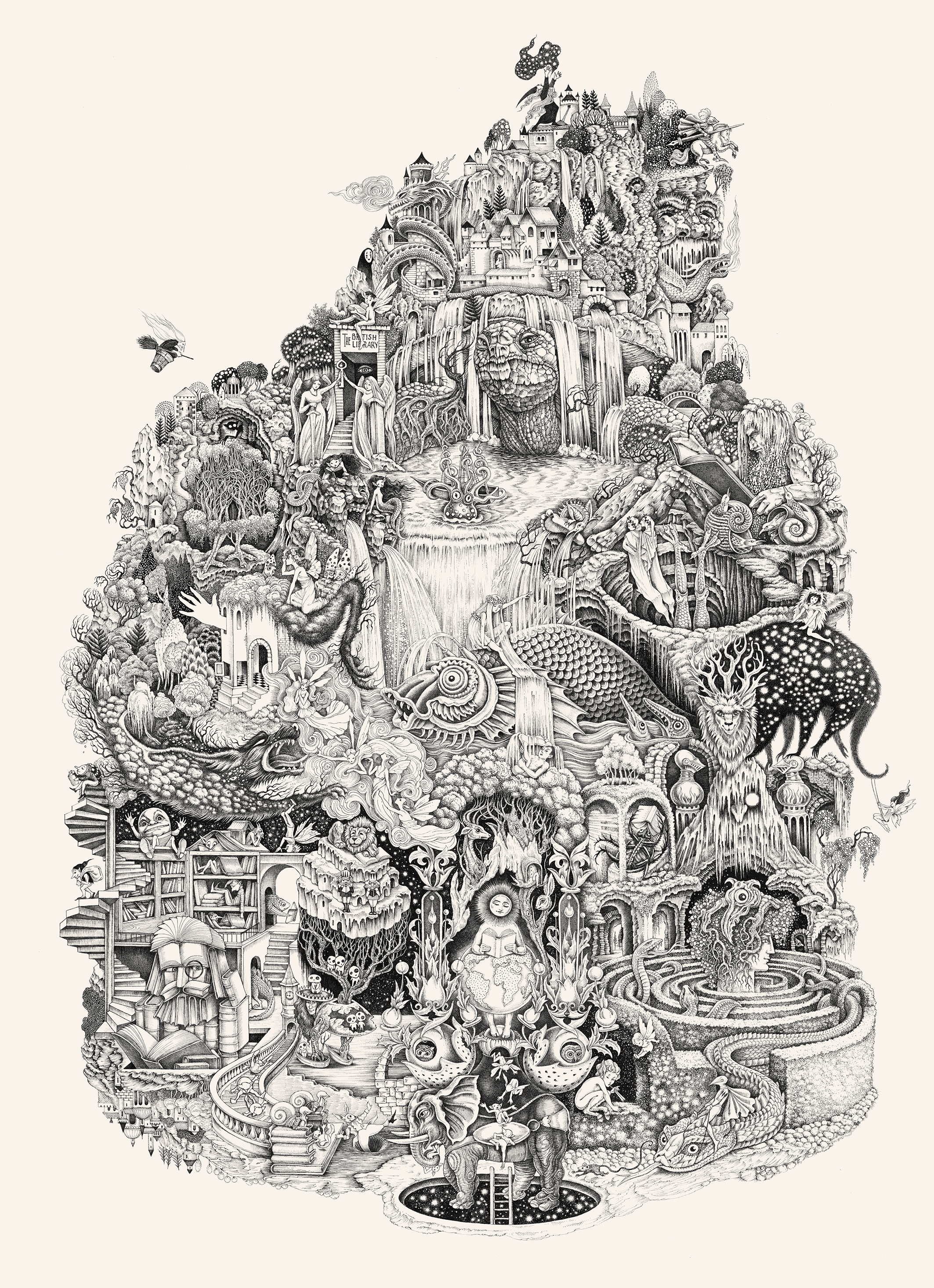
The British Library. Fantasy Exhibition proposition and key visual
Role: Art Director. Agency: Storycatchers
Context
This campaign launched the British Library’s major fantasy retrospective, celebrating the genre’s imagination and influence. The brief was to create a visual world that captured the sense of wonder and escapism that defines fantasy, while driving real-world impact through ticket sales and awareness.
Our campaign helped to bring about the most successful post-pandemic exhibition with ticket sales of 56,000 (24% above target) despite a cyber-attack that disrupted sales at key times.
Approach
We began work at the iconic British Library itself, running a ‘Choose your own adventure’-themed proposition workshop designed to harvest as much insight as possible from a project team of curators, event designers, in-house marketers, events and merchandising specialists.
From this workshop and our wider discovery work, we crafted three propositional territories, a range-finding exercise designed to draw out the views and preferences of the many stakeholders. And from their feedback we crafted our final proposition:
Art direction
Echoing the tone of the proposition the visual direction was built around the idea of layers within layers – we needed to create a world the viewer could travel across, through and into. A key piece in the exhibition, Bernard Sleigh’s Mappe of Fairyland, became an important reference point.
Environmental features like mountains, rivers and caves hinted at the vastness of the fantasy genre, while hidden characters added moments of discovery. The composition was anchored by the British Library’s iconic gateway on Euston Road – a nod to the portals ubiquitous in fantasy literature.
The intricately illustrated landscape became a labyrinth of stories, each layer revealing more about the richness, diversity and complexity of fantasy. We worked closely with curators to decide which characters and motifs to weave into the design, grounding the magic in the Library’s own collection and hinting at the journey visitors might take – both through the exhibition and into the genre itself.
The artwork became the foundation for every aspect of the exhibition identity. It featured on everything – from merchandise and gift shop displays to the beautifully produced Adventurer’s Guide and the accompanying coffee table book of essays from curators and leading voices in fantasy literature.
The central illustration and propositional theme unified all of it, giving every touchpoint – physical and digital – a shared sense of story and imagination.
Outcome
The campaign became one of the library’s most successful since the pandemic, selling 56,000 tickets and winning an award in the Institutional category at the International Communication Arts Awards. The illustration was also nominated for the Victoria and Albert Museum’s Illustrator of the Year award, so Sveta and I, after lots of collaboration via Teams, finally got to meet in person, which was wonderful.
This project represents the kind of work I love most – world-building through art direction. It combined creative craft with strategic design thinking, collaboration and precision. Turning an idea as broad as “fantasy” into something people could walk past, step into and believe in was a real privilege.
The full illustration is below - how many characters and references can you find?
There’s 65…
